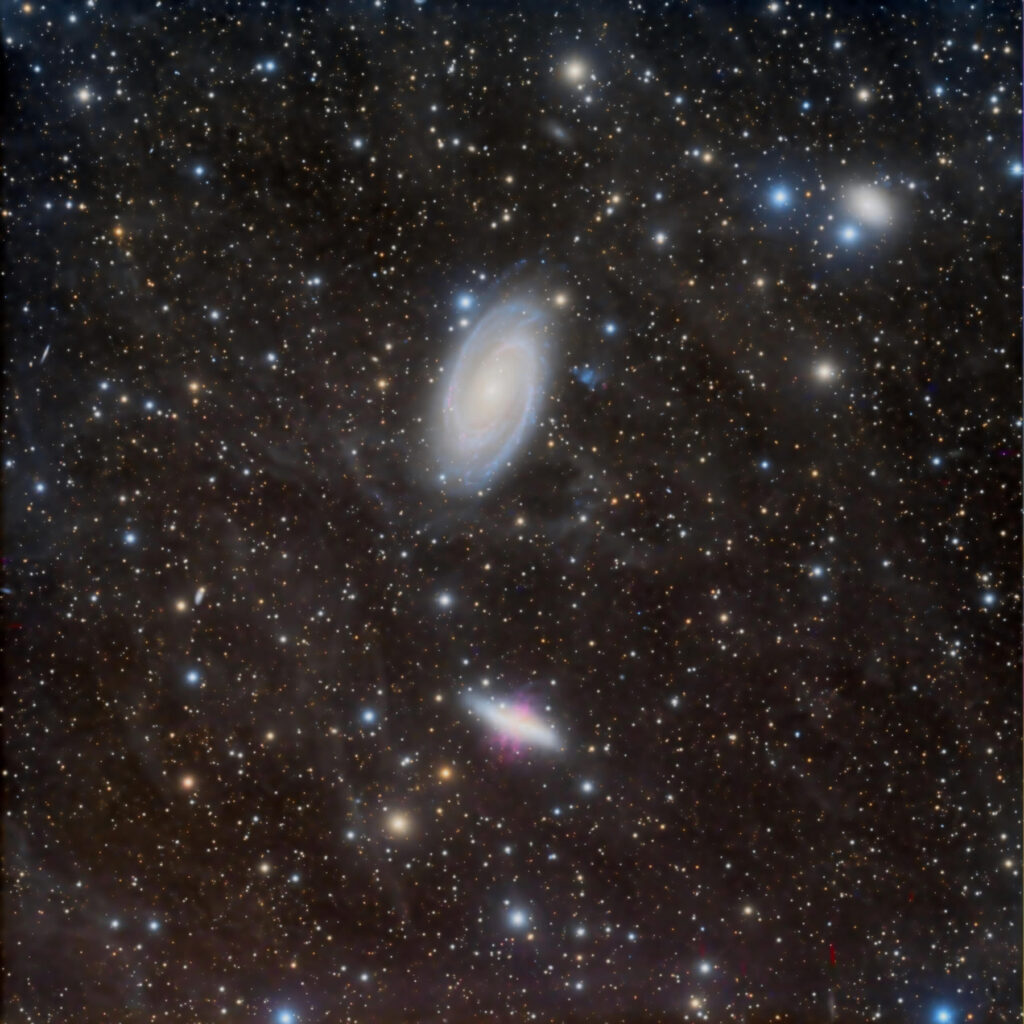The three prominent galaxies in this field are part of the "M81 Group" of galaxies in Ursa Major. Named after its most prominent galaxy (M81, the brightest galaxy in this image), the group consists of some 20 galaxies at a distance of 12 million light years. The bright galaxy below M81 is M82, and the smaller galaxy to the right of M81 is NGC3077. M82 is an irregular "starburst" galaxy in which rapid and explosive star formation is occurring on a massive scale, probably due to a close encounter with M81. Such an encounter sends gravitational shock waves resonating through the smaller galaxy, and these waves shove and compress huge masses of hydrogen gas. As the gas is compressed, it coalesces into clumps. The clumps collapse further due to gravity, creating enormous temperatures (due to gravitational contraction) triggering nuclear fusion reactions that give birth to new stars. Many of these stars are giants, with a relatively short life ending in a cataclysmic supernova explosion, and these explosions in turn create additional gravitational shock waves leading to additional star formation in a "chain reaction." The whole process occurs "quickly" (by astronomical standards), giving rise to the name "starburst" galaxy. In M82, this phenomenon was almost certainly caused by a close encounter with the neighboring galaxy M81.
the "M81 Group" in Ursa Major
Date Taken:March 2019
Location Taken:New Mexico
Conditions of Location: Equipment Used:Astrophysics RH-305 f/3.8 apochromatic refractor SBIG STX-16803 camera
Processing Used:20 x 10 minutes LRGB for total exposure of 13 hours using Pixinsight with assistance from Dr. Michael Kolstad
Distance from Location:12 million light years
Constellation:Ursa Major
Other Link:
